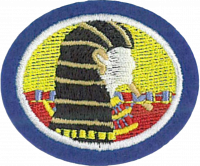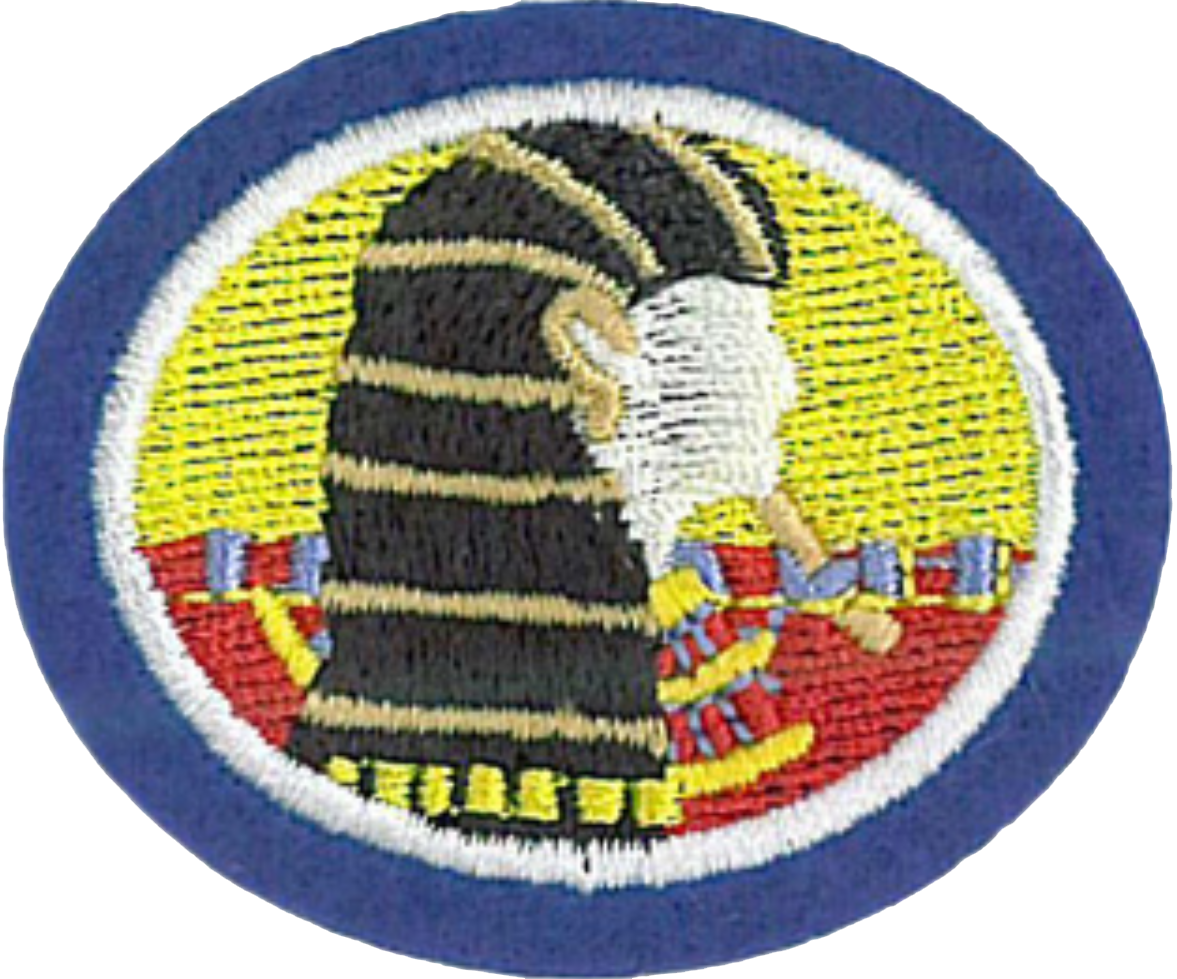Difference between revisions of "AY Honors/Biblical Archaeology/Requirements/en"
(Updating to match new version of source page) |
(Updating to match new version of source page) |
||
| (One intermediate revision by the same user not shown) | |||
| Line 1: | Line 1: | ||
{{HonorSubpage}} | {{HonorSubpage}} | ||
| − | |||
| − | |||
<section begin=Body /> | <section begin=Body /> | ||
| − | + | <b>1. <section begin=req1 /><noinclude></noinclude>Define archeology and differentiate it from paleontology. | |
| − | <b>1. <section begin=req1 /><noinclude></noinclude>Define archeology and differentiate it from paleontology. | ||
<noinclude></noinclude><section end=req1 /></b> | <noinclude></noinclude><section end=req1 /></b> | ||
| − | <b>2. <section begin=req2 /><noinclude></noinclude>Define the following terms: | + | <b>2. <section begin=req2 /><noinclude></noinclude>Define the following terms: |
<noinclude></noinclude><section end=req2 /></b> | <noinclude></noinclude><section end=req2 /></b> | ||
| Line 48: | Line 45: | ||
<noinclude></noinclude><section end=req2l /></b> | <noinclude></noinclude><section end=req2l /></b> | ||
| − | <b>3. <section begin=req3 /><noinclude></noinclude>Define maximalism and minimalism | + | <b>3. <section begin=req3 /><noinclude></noinclude>Define maximalism and minimalism |
<noinclude></noinclude><section end=req3 /></b> | <noinclude></noinclude><section end=req3 /></b> | ||
| − | <b>4. <section begin=req4 /><noinclude></noinclude>Describe or illustrate ten tools that are used in an archaeological excavation. If possible demonstrate how several of the tools are used. | + | <b>4. <section begin=req4 /><noinclude></noinclude>Describe or illustrate ten tools that are used in an archaeological excavation. If possible demonstrate how several of the tools are used. |
<noinclude></noinclude><section end=req4 /></b> | <noinclude></noinclude><section end=req4 /></b> | ||
| − | <b>5. <section begin=req5 /><noinclude></noinclude>Describe the principal techniques of dating an archaeological artifact | + | <b>5. <section begin=req5 /><noinclude></noinclude>Describe the principal techniques of dating an archaeological artifact. |
<noinclude></noinclude><section end=req5 /></b> | <noinclude></noinclude><section end=req5 /></b> | ||
| Line 60: | Line 57: | ||
<noinclude></noinclude><section end=req6 /></b> | <noinclude></noinclude><section end=req6 /></b> | ||
| − | <b>7. <section begin=req7 /><noinclude></noinclude>Report on the history of archaeology (minimum of 20 events of significance) by: | + | <b>7. <section begin=req7 /><noinclude></noinclude>Report on the history of archaeology (minimum of 20 events of significance) by: |
<noinclude></noinclude><section end=req7 /></b> | <noinclude></noinclude><section end=req7 /></b> | ||
| Line 66: | Line 63: | ||
<noinclude></noinclude><section end=req7a /></b> | <noinclude></noinclude><section end=req7a /></b> | ||
| − | :<b>b. <section begin=req7b /><noinclude></noinclude>Illustrating a detailed timeline | + | :<b>b. <section begin=req7b /><noinclude></noinclude>Illustrating a detailed timeline |
<noinclude></noinclude><section end=req7b /></b> | <noinclude></noinclude><section end=req7b /></b> | ||
| Line 88: | Line 85: | ||
<b>9. <section begin=req9 /><noinclude></noinclude>Assemble a folder with ten archaeological discoveries that have connected with the biblical history of the Old and New Testament. The folder should have the following characteristics: | <b>9. <section begin=req9 /><noinclude></noinclude>Assemble a folder with ten archaeological discoveries that have connected with the biblical history of the Old and New Testament. The folder should have the following characteristics: | ||
| − | :a. In order by chronological dates or geography | + | :a. In order by chronological dates or geography |
| − | :b. Organized according to the Old and New Testament | + | :b. Organized according to the Old and New Testament |
| − | :c. Photos | + | :c. Photos |
| − | :d. Texts | + | :d. Texts |
| − | :e. Bibliography sources | + | :e. Bibliography sources |
| − | :f. Personal commentary about every artifact or discovery | + | :f. Personal commentary about every artifact or discovery |
<noinclude></noinclude><section end=req9 /></b> | <noinclude></noinclude><section end=req9 /></b> | ||
| Line 99: | Line 96: | ||
<noinclude></noinclude><section end=req10 /></b> | <noinclude></noinclude><section end=req10 /></b> | ||
| + | <section begin=challenge /> | ||
<b>11. <section begin=req11 /><noinclude></noinclude>Do one of the following: | <b>11. <section begin=req11 /><noinclude></noinclude>Do one of the following: | ||
<noinclude></noinclude><section end=req11 /></b> | <noinclude></noinclude><section end=req11 /></b> | ||
| − | :<b>a. <section begin=req11a /><noinclude></noinclude>Assemble a simple model of Jerusalem observing the following: | + | :<b>a. <section begin=req11a /><noinclude></noinclude>Assemble a simple model of Jerusalem observing the following: |
<noinclude></noinclude><section end=req11a /></b> | <noinclude></noinclude><section end=req11a /></b> | ||
| Line 117: | Line 115: | ||
<noinclude></noinclude><section end=req11aiv /></b> | <noinclude></noinclude><section end=req11aiv /></b> | ||
| − | :<b>b. <section begin=req11b /><noinclude></noinclude>Simulate an archaeological dig (often referred to online as a “schoolyard dig”). Either set up the dig OR participate in a meaningful way at all stages of the dig process including: | + | :<b>b. <section begin=req11b /><noinclude></noinclude>Simulate an archaeological dig (often referred to online as a “schoolyard dig”). Either set up the dig OR participate in a meaningful way at all stages of the dig process including: |
<noinclude></noinclude><section end=req11b /></b> | <noinclude></noinclude><section end=req11b /></b> | ||
| Line 140: | Line 138: | ||
::<b>vii. <section begin=req11bvii /><noinclude></noinclude>Assessing the importance of the dig process | ::<b>vii. <section begin=req11bvii /><noinclude></noinclude>Assessing the importance of the dig process | ||
<noinclude></noinclude><section end=req11bvii /></b> | <noinclude></noinclude><section end=req11bvii /></b> | ||
| + | <section end=challenge /> | ||
<section end=Body /> | <section end=Body /> | ||
| − | |||
| − | |||
| − | |||
| − | |||
| − | |||
Latest revision as of 18:38, 21 July 2022
1. Define archeology and differentiate it from paleontology.
2. Define the following terms:
- a. Papyrology
- b. Egyptologist
- c. Assyriology
- d. Orientalist
- e. Cuneiform
- f. Hieroglyphic
- g. Paleography
- h. Antiquarian
- i. Archeological site
- j. Stratigraphy
- k. Tel, tell, and Khirbet
- l. Replica
3. Define maximalism and minimalism
4. Describe or illustrate ten tools that are used in an archaeological excavation. If possible demonstrate how several of the tools are used.
5. Describe the principal techniques of dating an archaeological artifact.
6. Name three benefits that biblical archaeology can provide a student of the Bible.
7. Report on the history of archaeology (minimum of 20 events of significance) by:
- a. Writing a two-page research report
- b. Illustrating a detailed timeline
- c. Creating an electronic presentation
- d. Other presentation method approved by your instructor
8. Share with a group or instructor the significance of each of the following famous archaeologists (or other archaeologists relevant to your region, country, or division). Be detailed and specific.
- a. Jean-Francois Champollion
- b. Edward Robinson
- c. William Foxwell Albright
9. Assemble a folder with ten archaeological discoveries that have connected with the biblical history of the Old and New Testament. The folder should have the following characteristics:
- a. In order by chronological dates or geography
- b. Organized according to the Old and New Testament
- c. Photos
- d. Texts
- e. Bibliography sources
- f. Personal commentary about every artifact or discovery
10. Discover information from available resources (video, books, magazines, journals, etc.) about five excavations that are happening at this point in time, around the world, that are relevant for the comprehension of events in the Bible. Explain why every excavation is relevant for the comprehension of the Biblical text.
11. Do one of the following:
- a. Assemble a simple model of Jerusalem observing the following:
- i. Relief
- ii. Different perimeters of the city in the time of the First Temple (David and Solomon), of the Second Temple (Herod and Jesus Christ) and the current Jerusalem
- iii. The major archaeological sites
- iv. The main points of religious visitation
- b. Simulate an archaeological dig (often referred to online as a “schoolyard dig”). Either set up the dig OR participate in a meaningful way at all stages of the dig process including:
- i. Collecting tools
- ii. Laying out the grid/area for excavation
- iii. Digging
- iv. Identifying artifacts
- v. Identifying artifact context
- vi. Recording data
- vii. Assessing the importance of the dig process


